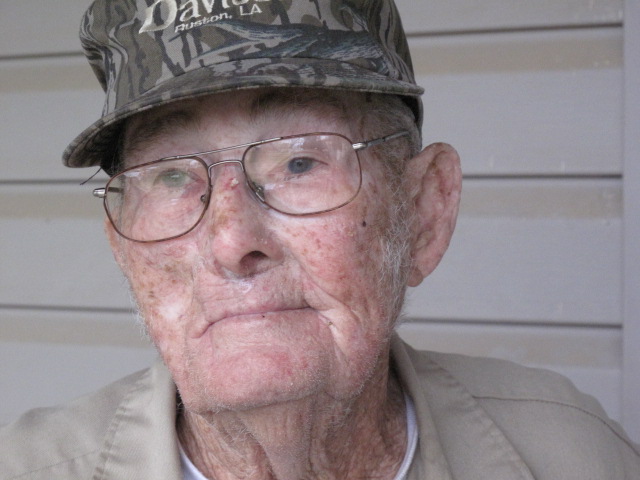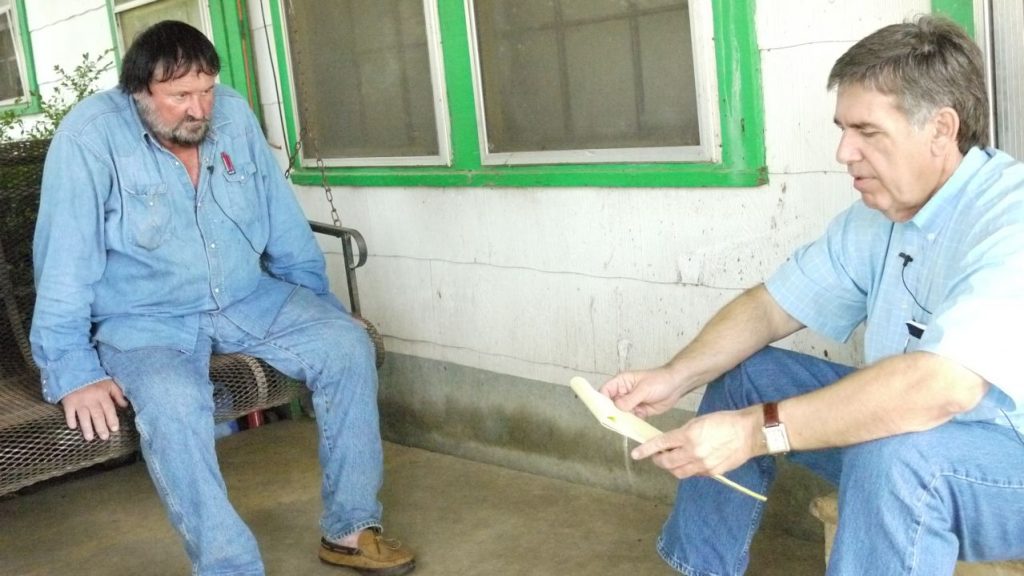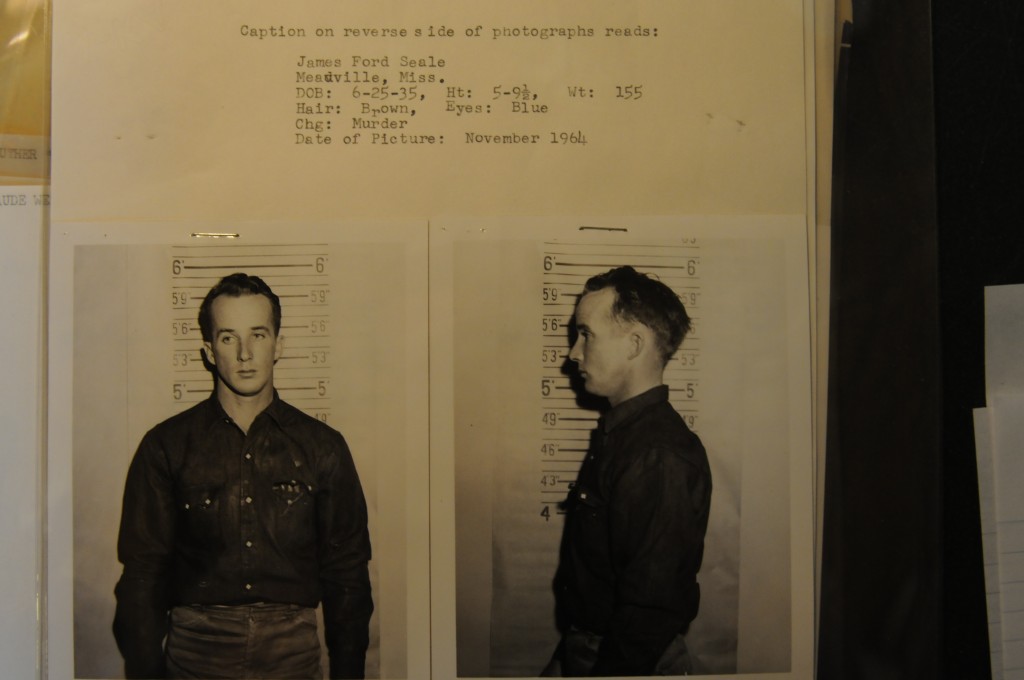Ernest Gilbert was a leader in the White Knights of the Ku Klux Klan who became a paid FBI informant in 1964. His identity was revealed decades later on ABC’s 20/20 news show.
Gilbert was born in Smith County, MS, on June 13, 1925. During his final years he lived in Clinton, LA, and died at age 79 in 2004 at the Department of Veterans Affairs Medical Center in Alexandria, LA.
In 1964, Gilbert had become a confidential informant assigned the informant code of JN-30 (JN for Jackson, Miss., FBI office) after he told FBI Agent Clarence Prospere of Natchez that Klansmen Jack Seale and Ernest Parker of Natchez had confessed to him their involvement in the murder of two Black teens from Franklin County, Miss.
Gilbert also identified Jack’s Seale brother (James Ford Seale) and father (Clyde Seale) as members of the wrecking crew that killed Henry Hezekiah Dee and Charles Moore, both 19 years old. The teens had been kidnapped in Meadville, Miss., beaten and tortured in the Homochitto National Forest before drowning in an old bend of the Mississippi River south of Tallulah, Louisiana.
Gilbert had been a member of the Original Knights of the Ku Klux Klan of Louisiana (Mississippi Realm) when dissension in the group in 1963 resulted in a split. Mississippi Klansmen formed the White Knights and Gilbert was the group’s leader for a brief period until Sam Bowers was named the Imperial Wizard. Gilbert helped write the White Knights’ constitution.
Once Bowers took over, Gilbert was named director of the highly secretive Klan Bureau of Investigation. His duties were to gather intelligence in preparation for acts of intimidation or violence.
Gilbert spoke at White Knight meetings across the state and later joined the United Klans of America. He continued his Klan membership into the 1970s while continuing work as an informant for the FBI.
He also assisted the FBI in the Mississippi Burning case and provided key information on other cases as well.
But it was Gilbert’s information to the FBI on the Dee-Moore murders that ultimately led to the 2007 conviction of James Ford Seale.
The Dee-Moore Murders in 1964
According to a 2009 article in the Concordia Sentinel in Ferriday, LA, written by Canadian journalist David Ridgen:
“Charles Marcus Edwards, a sworn member of the White Knights of the Ku Klux Klan, who lived in the Kirby community (in Franklin County, Miss.) at the time, implicated African-American Henry Hezekiah Dee as a possible gun runner. Edwards felt that because Dee wore a black headscarf he was suspicious. Dee lived down the street from Edwards and would pass by the Edwards house on foot from time to time.
“On May 2, 1964, Dee was spotted in Meadville and the call went out to available Klansmen for help. They wanted to act on Edwards’ assertion. White Knights Klansmen Charles Marcus Edwards, James Ford Seale, Clyde Seale, Curtis Dunn and Archie Prather were part of the call that day. In a truck and James Ford’s Seale’s Volkswagen, they headed toward the spot where Dee was reported to have been seen.
“By the time the five Klansmen assembled and arrived, Henry Dee had been joined by his friend Charles Eddie Moore. Together they were trying to hitch a ride home across from the Tastee Freeze at the edge of town. Dee was heading to the lumber mill in Roxie where he worked to pick up his paycheck, and Moore was heading home just up the highway a few miles.
“James Ford Seale decided to approach the two boys on his own, while the rest of the Klansmen stood by watching from a distance in the truck. Seale pretended to be a revenue agent searching for bootleggers. Dee and Moore got in Seale’s Volkswagen. He drove them into the Homochitto National Forest, followed by the other four Klansmen.
“Dee and Moore were tied and beaten with bean sticks. Seale hit them in the head with a carbine. They were interrogated and asked about the gun running, and who was involved in it. At one point during the beating one of the boys cried out that perhaps the Reverend Clyde Briggs of the Roxie Baptist Church might know something. Perhaps the guns were in the basement of his church.
“The beating continued until Dee and Moore were bloody and unconscious. Four Klansmen left, leaving Seale to ‘guard’ Dee and Moore in the forest.
“A call was made for help and WKKKK members Ernest Parker and Jack Seale drove from Natchez to help bundle Dee and Moore into the trunk of Parker’s car. The boys were driven by James Seale, Ernest Parker, and Jack Seale to Parker’s Landing on the Louisiana side of the Mississippi River, off an old ox-bow lake.
“The Klansmen removed Dee and Moore, who had miraculously survived the long drive in the trunk, and chained them to a Jeep motor block and heavy train rails and wheels. One by one, Dee and Moore were rowed into the Mississippi and dropped overboard while still alive.”
Klansman Charles Edwards was given immunity in 2007 to testify against James Ford Seale in federal court in Jackson, Miss. Seale was convicted and later died in prison.
Gilbert Revealed as FBI Informant in Dee-Moore Murders
Before Seale was convicted, ABC News Producer Harry Phillips interviewed Ernest Gilbert concerning the information he provided the FBI on the Dee-Moore murders in 1964. Gilbert’s identity as a secret informant had been unknown until it was revealed by ABC News’ 20/20.
Phillips wrote, “I found myself sitting across a kitchen table in a tiny house somewhere in rural Louisiana — face to face with JN-30R — the one man whose testimony could, according to the FBI reports, solve a terrible civil rights murder case gone cold.
“Gilbert was a tortured soul. With a turned-down mouth and deep-sunk, black-ringed eyes, he looked like a man bearing a massive burden of guilt & like a man who hadn’t slept in months — maybe decades. Over five hours, Gilbert chain-smoked at least three packs of cigarettes as we plumbed the darkest recesses of his memory.
“At one point he began gagging, got up and vomited into a sink. This was a man in a state of catharsis. The result was his decision to go public for the first time — to finally shed a cloak of anonymity that had protected him for 36 years.”
Michelle Gilbert on Learning Her Father was FBI Informant
News of Gilbert’s secret identity as an FBI informant shocked his daughter Michelle. Before the interview with ABC, Gilbert told Michelle that a news organization was going to make it known that Gilbert had identified the Klansmen involved in the 1964 murders of Dee and Moore.
In 2017, then Concordia Sentinel editor Stanley Nelson and Canadian journalist David Ridgen interviewed Michelle Gilbert for Ridgen’s podcast, “Somebody Knows Something,”
MICHELLE: It’s still a very difficult thing for me to… I’m not real sure how to deal with…sometimes I still do. The man I knew and then all this is just not the same two people. And um, it tortured him. I know it’s very hard for me to deal with.
STANLEY: You told us one time about when you first realized your dad’s background in the Klan.
MICHELLE: Dad called me, and he said, I need you to come over. And I said, okay, well I’ve got this to do. And he said, no, I need you to just drop everything, there’s something I need to tell you. And I’m like, if you knew my dad, you were like, oh, crap. What have I done now, or—[Laughs] –what’s coming up? You know. And so I went over there and sat down, and he had his coffee cup, and he was on the back deck that he had built and he had this look on his face. And he said, there’s things that you just don’t know about my life. That I didn’t want you to ever know and…you know, basically, I was trying to hide from you. And um, he said that a reporter had called him from 20/20, his name was Harry Philips and he wanted to investigate things that had happened when he was in the Klan.
And, like I said, over the years I guess growing up, I knew of the Klan, I knew what it was. I knew that my Daddy knew of people who were in the Klan. It wasn’t something that we talked about, you just knew. I had known, I guess, that he had been… I grew up, I can remember as a 6 year old, I saw that picture on the wall. And it struck me as funny. The cross was burning. And I asked him, and I remember being a little bitty girl, Daddy why would you burn the cross? And…I will never forget that look on his face. It was like, oh, God. It’s like it hit him, what am I going to tell her? You know? And, he’s like, Well…it’s more illumin—like, he was trying to explain it. You know how adults try to explain to children.
And I just said, well I don’t think you should burn Jesus’s cross. And I never saw that picture in the house again. It really struck him. And I think he realized, okay, maybe I’m leading this double life, and now I realize that it’s affecting her. So as far back, that is my very first memory of even fathoming him… I guess really being a party to the things that happened then.
RIDGEN: But it wasn’t until the late 1990s that Gilbert actually spoke to his daughter about what he had done.
MICHELLE: I was like, okay, what are you talking about? And he goes, well, there was a murder. And… I almost crawled outta my skin. I’m like, what are you talking about, there was a murder? And he said, um, there were two kids murdered. And he started crying, I mean, he was just sobbing, and he said, and I… I did what I thought was right, he said, because it wasn’t right, and he really started going on about how wrong it was. And um… He said um, he said, “I went to the FBI about it. And I brought down the Klan.” And I was just, overwhelmed. You know, I mean it would overwhelm anybody. I think you just sit there and kinda look at your father and go, what the hell are you telling me?
RIDGEN: Gilbert had lived with the secret for years, and likely would’ve taken it to his grave, had he not been contacted by that TV producer.
MICHELLE: He said, well, he told me that if I did not talk, they were going to go with the story without me talking about it, and he said, and I don’t feel like… It was kinda, he felt like he was caught. You know, I have to tell them or they’re just going to go off the wall with whatever they want to go with. And I have no choice. He didn’t want it put all over the news, and then, you know, me and the girls have to suffer for something he was involved in. I don’t think he ever regretted one minute of what he did because he felt like he had to do something. I think he just, he wanted it to be left alone, and just let it go. Because I think he wanted to have some peace in life, before he left this world. And I don’t think he did.
I found out he was in Klan up until the late 70s. I think he got involved in it as a…because everyone else was involved in it. And you know, it was a big, we got to do something. Because back then, everybody was scared that if the blacks and the whites got together it would be this big mess. I think he really was like, we’ve gotta preserve our world, you know, what we’re accustomed to, I guess. And so he kinda went off on that tangent. But I think when it hit him, the severity of what people were doing and, you know, it’s like he told me, you have these crazy, blood thirsty people out there, and they just wanna go kill somebody.
RIDGEN: Ernest Gilbert was a leader in a white supremacist group that was, at best, afraid of racial equality. He participated in and helped organize events that lead to furthering the ideals of white supremacy, helping in the least to fuel violence. But, when things turned violent, he changed his mind and became a paid informant for the FBI.
MICHELLE: I think once he got into the FBI, I think he wanted to do his part and let it go. And I think they kept pushing and pushing and pushing and pushing and pushing. And I think he felt trapped. He made the comment one time, they had everything they needed but they wouldn’t stop. It was like, he said, it was like they wanted to prolong it. And I think he became very disgusted with that. If you wanted to shut this down you could, but you’re not. And I think he resented them for that, you know?
RIDGEN: The FBI?
MICHELLE: Yes.
STANLEY: And your understanding is that the reason he stayed in the Klan was because the FBI wanted him to stay and provide information to them.
MICHELLE: That was exactly why he stayed. He told me that, out of his own mouth. And then, with people who are psychotically crazy, that you’ve got to remain close to without letting them know that you’re going behind their back, because you know they’ll kill you. And you know they’ll kill your family, and you know that if they can beat somebody to death, the way they did more than one time, it’s not going to be a nice killing. Can you see your children being tortured that way?
RIDGEN: An additional insult is that, the Dee and Moore case that he informed about in, I think it was August, early August ‘64, he talked to an FBI agent who lived in Natchez at the time, and told him what he had heard. The irony or the troubling point is that the information he gave actually never got to the person who could’ve made a difference in the case at that time. According to Mississippi Highway Safety Patrol officer Gwin Cole, who was one of the lead Mississippi investigators on the Dee Moore case, the FBI never told him the information they had gathered from Ernest Gilbert. And so, this information may have never found its way to District Attorney Lenox Foreman, who could have used it to call a grand jury. Regardless, Gilbert’s information was ruled inadmissible in the 2007 trial of James Ford Seale. Because they wanted to protect your dad’s identity, the FBI needed to protect their confidential informant.
MICHELLE: And he found no peace. It was like, all the good he tried to do was defeated. And then when you finally think you’re free from it…here comes some asshole with a camera wanting to…
RIDGEN: So … when the ABC documentary came out, there was hope that there would be a trial in the Seale case. But the US attorney at the time, Brad Piggott, decided there wasn’t enough evidence. And they didn’t bring your dad in, and they didn’t actually go forward with the case. So how did your dad react to that, after coming out in public?
MICHELLE: I don’t know if you really want me to really tell you how he reacted to that. [Sniffs] He just said, the same fucking shit. Over and over again. And he didn’t say the F word very often, so when he said it, it was…it was disgust. He said all they’re doing is stirring the shit pot, trying to stir everybody up again, and they’re not going to do anything about it. I know after this all happened he… There was something that changed about him, he became very…distant. You know very with—like, he withdrew within himself. I just want people to know that he was not a monster. And…I think he tried to do what he thought was right. And I don’t think he ever felt like he did enough.
RIDGEN: So your mom knew all this stuff too. She must’ve known, she’s in these pictures.
MICHELLE: Oh yeah, she knew.
RIDGEN: So did you ever talk or confront your mom about that or?
MICHELLE: I tried. But my mother and I were like night and day. I was always a lot closer to my father. I think she knew a lot of what went on, but she never really talked about it much. I don’t think he let her all the way in to what he was involved in, and how deep he was involved in it. I really don’t.
STANLEY: And what year did he die?
MICHELLE: He died in 2004. I ended up having to have him committed. He had dementia. And had post traumatic stress disorder. And he went horribly, horribly downhill. I bought a trailer and moved it next to their house so I could be closer. And he was walking around. And we had 5 acres up there. He was just walking around with a shotgun one night. Came up to the house, started beating on the door, was talking all kinds of gibberish. And I’m like, Daddy, okay, calm down, I’m going to go outside, you’re gonna scare the girls. It just got to the point that he was dangerous. He didn’t know…
STANLEY: His mind was gone.
MICHELLE: His mind was gone. But he was still afraid of something, because he always had a gun.
RIDGEN: Ernest Gilbert may not have been deemed mentally fit to testify, and this was confirmed in discussions with officials during my investigation of the Dee/Moore case.
MICHELLE: Here’s the truth. Everybody wasn’t evil. But a lot of people lived in the midst of evil.
RIDGEN: I take out my computer to show Michelle the digital copies I made of her father’s 8mm films and audio he recorded at Klan gatherings. I suspect that Gilbert is making at least some of these recordings with the intention of sharing them with the FBI since there are several shots of license plates and Klansmen with their masks off.
MICHELLE: Daddy was pretty high up in the Klan. I do know that. He was the Imperial Wizard at one time. And then he was the Grand Cyclops, whatever the hell that was. I said, were y’all playing Dungeons and Dragons or what? He didn’t like that. There’s some of him and Jack together goofing off.
RIDGEN: “Jack” meaning Myron Wayne “Jack” Seale, James Ford Seale’s older brother. Jack was directly involved in the murder of Dee and Moore, and he and his wife were also close friends of Ernest Gilbert. There’s Jack Seale. And it looks like he’s standing next to a police officer.
MICHELLE: Mmm hmm. A lot of the cops were in the Klan too. A lot of the National Guard.
ERNEST GILBERT [FROM TAPE]: Many times, men of ill-character have come into the Klan for the purpose of creating things that make the organization itself look bad. So every man that you see with a robe on, Or every man that carries a dues card in his pocket, Or every man that professes to be a Klansman is not necessarily one.
MICHELLE: Confession right there.
RIDGEN: What do you make of that? It’s almost like he’s…
MICHELLE: Yeah, Foreshadowing. That’s, that’s him. That was his way.
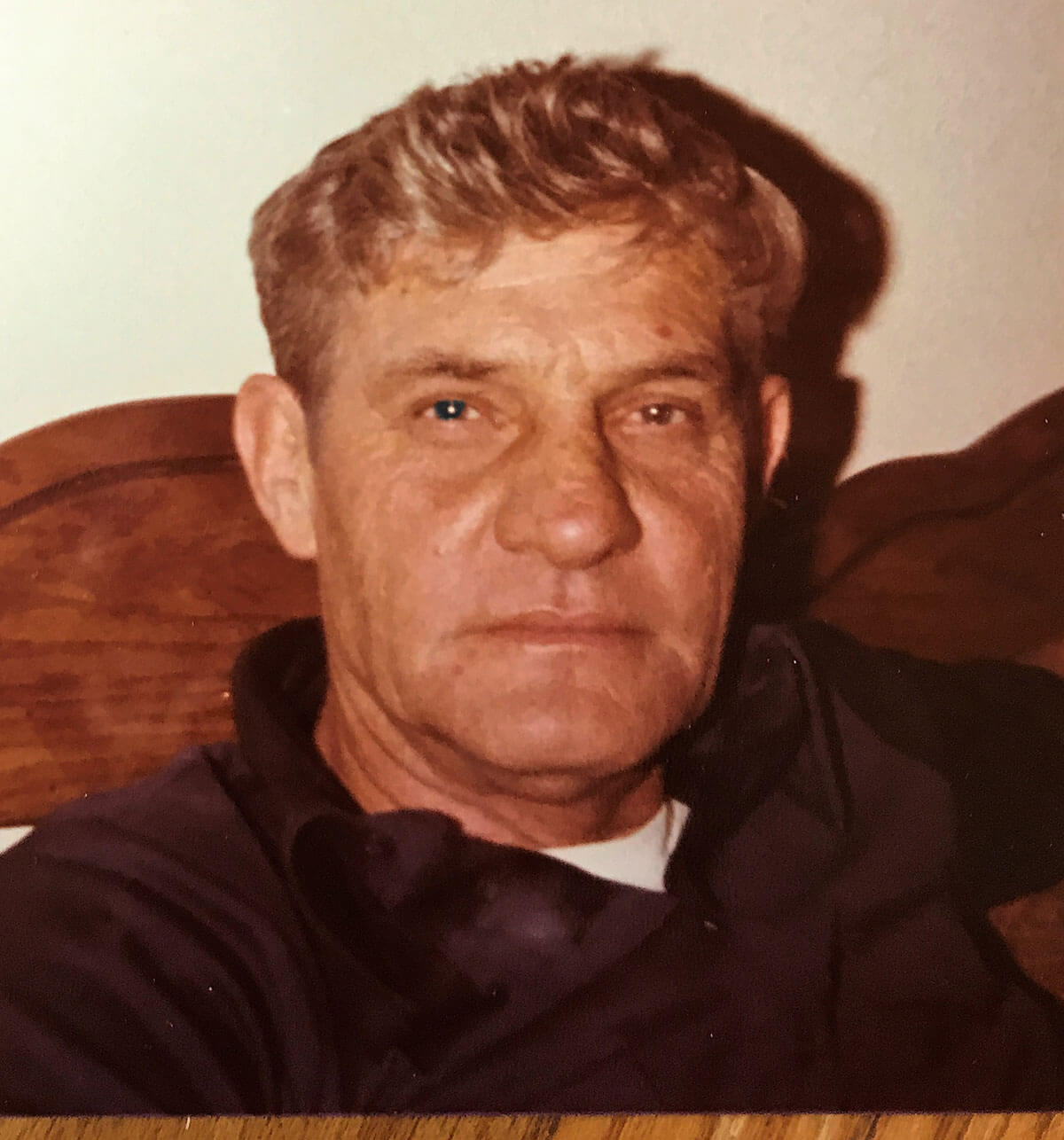

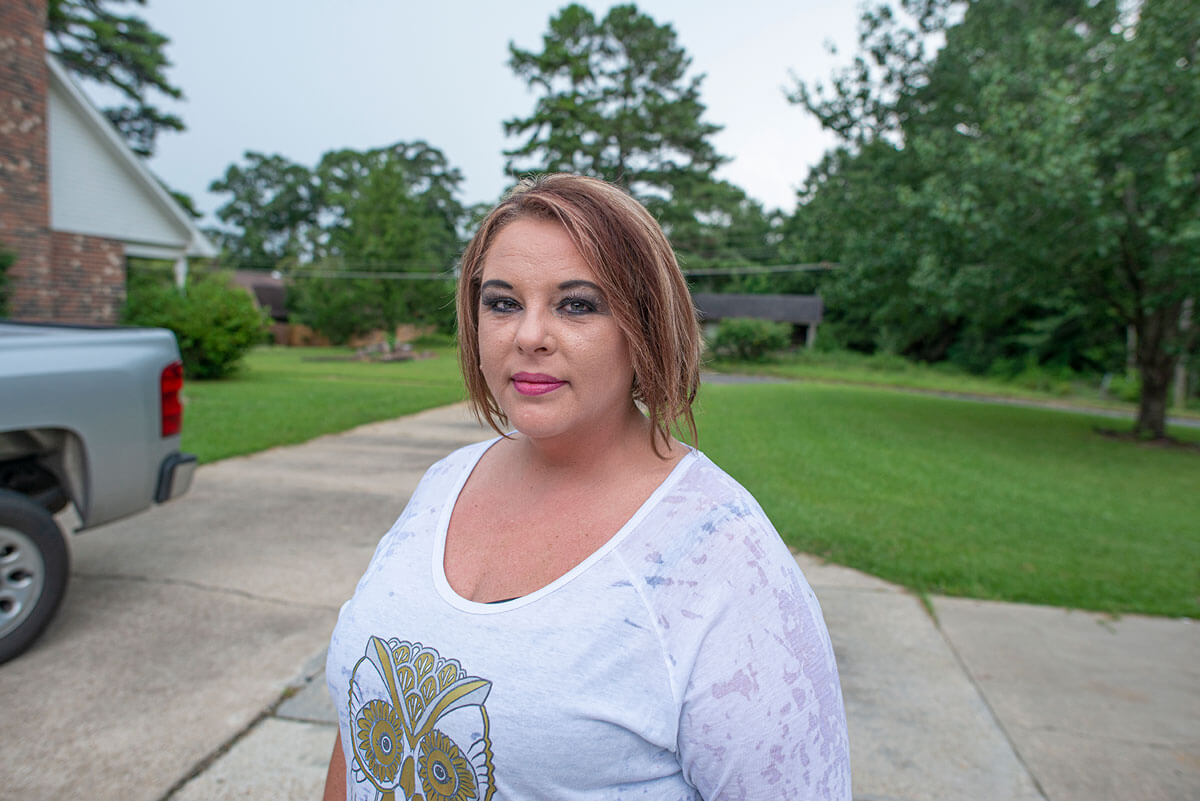
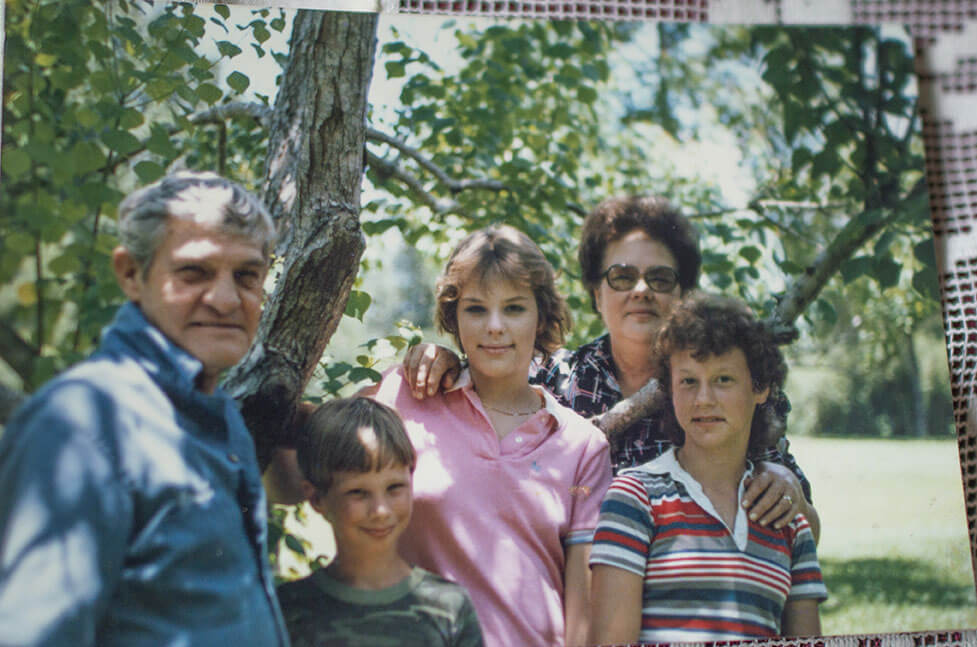
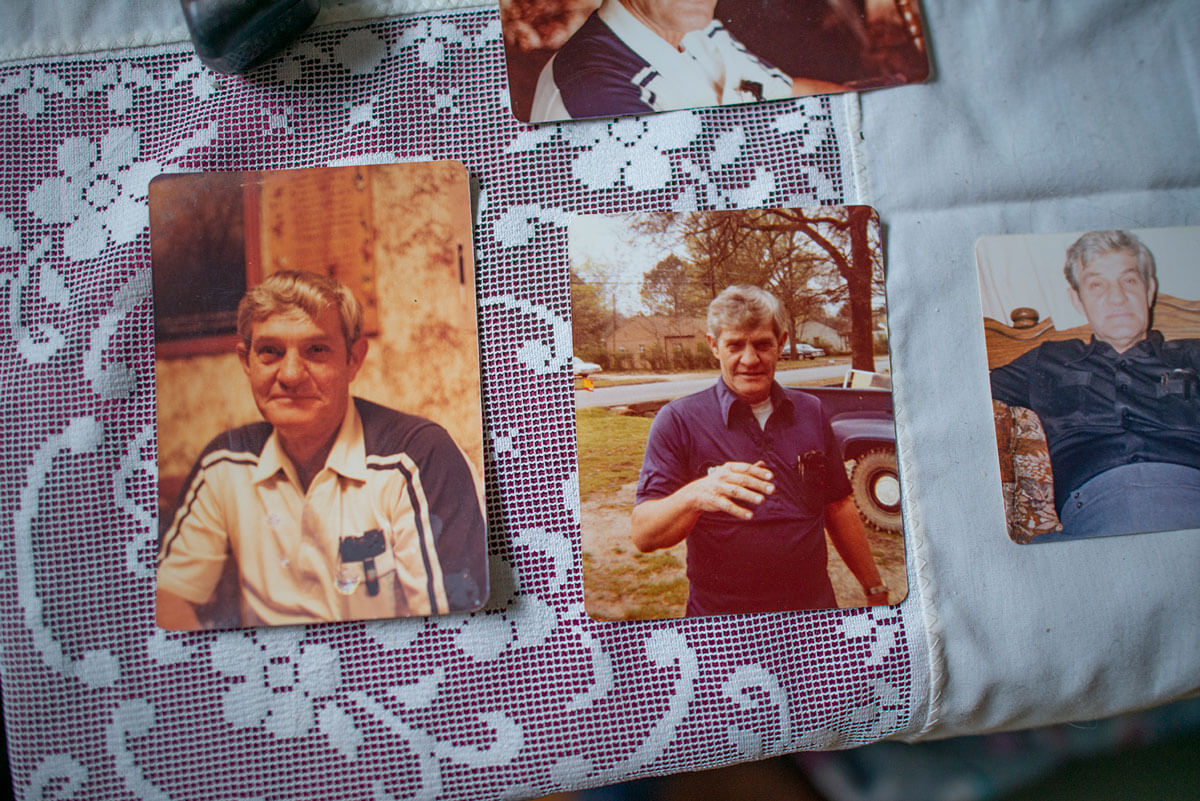

Michelle Gilbert talks about the day her dad told her he had been an FBI informant providing information on Klan violence. Her comments were reported in David Ridgen’s Somebody Knows Something podcast for CBC.
